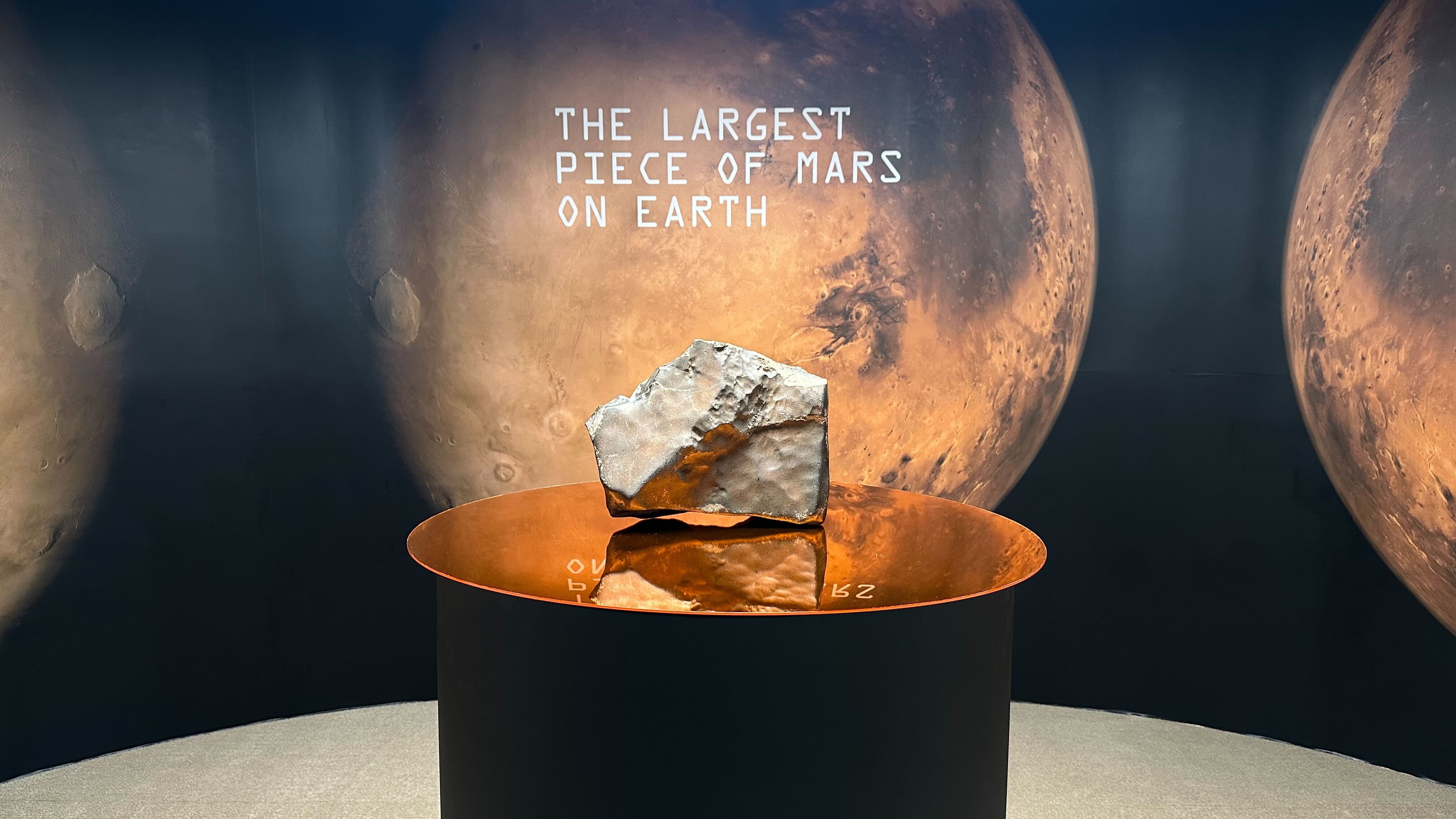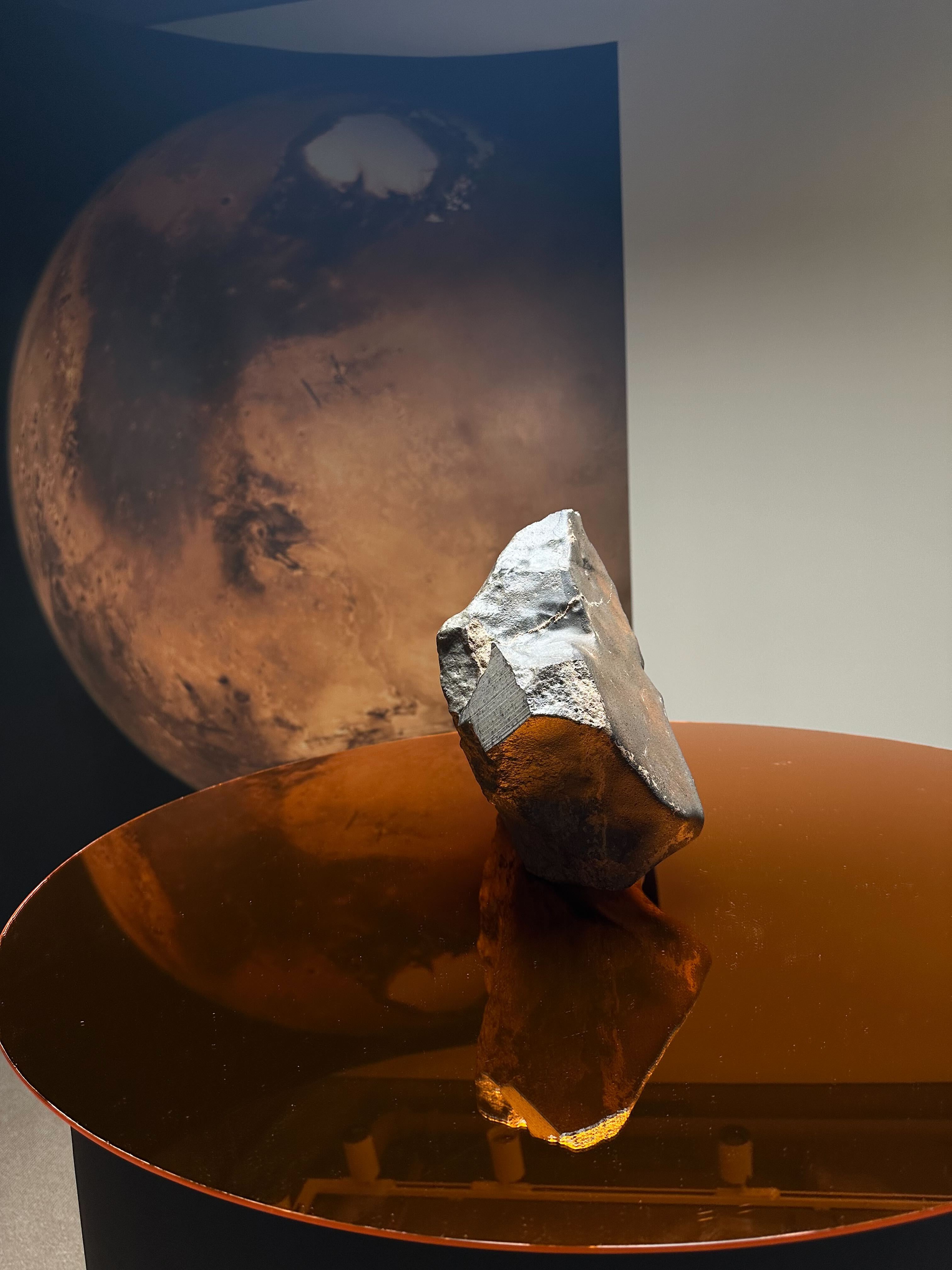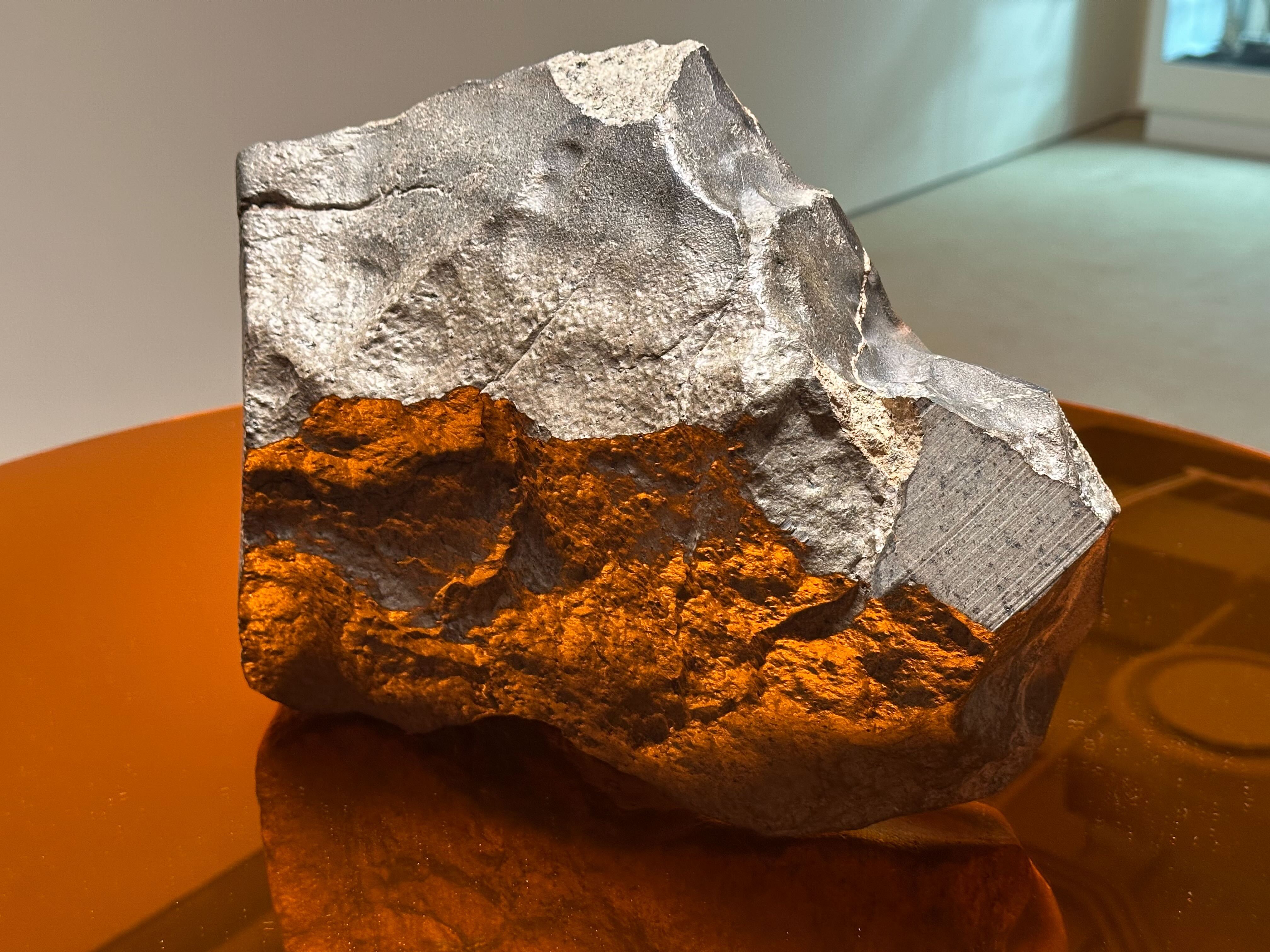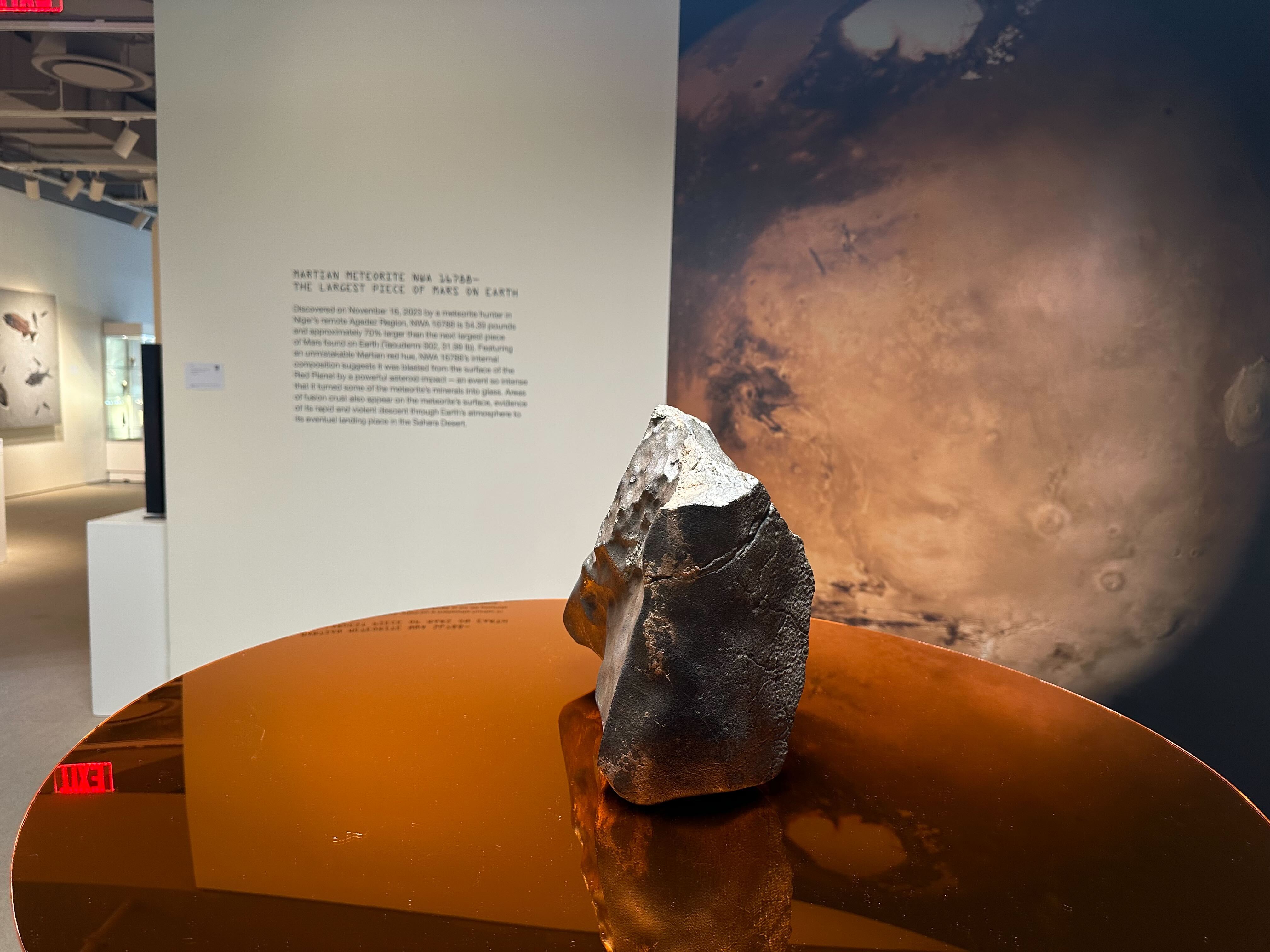The largest Mars rock on Earth is up for auction in NYC — it could be yours for $4 million (or more)
"If you look closely at it, you could almost use it as a film set for a movie about Mars."

NEW YORK CITY — Tucked away in a building on the corner of 72nd Street and York Avenue in Lenox Hill, an extraterrestrial marvel sits sturdily on a mirrored pedestal. It's the largest Mars rock on planet Earth — and it turns out its 54-pound (25-kilogram), ashy, terracotta structure isn't as priceless as you'd expect.
This Mars rock is up for auction at Sotheby's in New York City this week, which is why it's currently on display in the Upper East Side. As of now, it's expected to sell for between $2 million and $4 million, but it could very well sell for far more.
"At the end of the day, it's the bidders who tell us what things are worth, not me, not anyone else. The estimates are just there to give people an indication," Cassandra Hatton, the vice chairman of science and natural history at Sotheby's, told Space.com. "Last summer, I sold the Stegosaurus 'Apex.' For the Stegosaurus, the estimate was [$4 million to $6 million], and it sold for $44.6 million."
Hatton said she first heard about the Mars rock (formally called NWA 16788) about a year ago from the rock's seller, who learned about the specimen from a meteorite hunter in Africa. ("NWA" is short for "Northwest Africa," the region where the rock was found.) "When they first acquired it, they called me right away," she said. "I said, 'All right, we have got to get it tested; we need to have it published in the meteoritical bulletin."
As such, the seller went through several formal steps to document and test the rock as well as have it published upon. That testing process was rather rigorous for a few reasons. First of all, unlike lunar meteorite candidates, possible Mars meteorites have no pristine samples to be compared with. During the Apollo years, astronauts physically brought hundreds of pounds of moon rocks back to Earth, and those samples still serve as the isotopic reference point for determining whether a rock is indeed a lunar meteorite or just a peculiar piece of our planet.
Astronauts haven't visited the Red Planet yet, so of course we don't have any Mars rock reference points — and though there is still talk of a possible Mars Sample Return program to bring home samples that NASA's Perseverance rover has been collecting from the Martian surface over the last few years, the timeline on that is as unclear as can be. It may even be cancelled, if the Trump administration's fiscal year 2026 budget proposal is passed as-is by Congress.
Alas, the testing team had to come up with a workaround, and they did so by considering a few clues we have about what a Martian meteorite should look like.
Breaking space news, the latest updates on rocket launches, skywatching events and more!
How do you verify a Mars rock?
Imagine something huge impacting another world — in this case, an asteroid striking Mars long ago. As a consequence of that impact, there'd have been a bunch of stuff that shot upward during the crash — chunks of the Martian surface, particles of dust, and who knows what else. If any of that debris managed to shoot far enough to exit the Martian atmosphere, it'd have been possible for those travelers to reach Earth, travel through our atmosphere and land somewhere on our world.
Because of this journey, Martian atmospheric data is important to consider when verifying whether something is a Mars rock — and thanks to the twin Viking landers that NASA sent to Mars in the '70s, scientists indeed have that atmospheric data.
"You'll find little gas pockets in a lot of Martian meteorites," Hatton said. "We've cut those pockets open and compared the gas in those pockets to the gas that we analyzed from the Martian atmosphere — and if they match up, then we know that rock came from Mars."

The next step has to do with the general composition of a meteorite. Typically, Hatton explains, meteorites contain what's known as "Maskelynite" glass, which forms as the result of the big crash that forced the meteorite off the surface of a world.
"That's layer one," she explained. "Is there Maskelynite glass in this rock? If it is, it's a meteorite, because we only find that in meteorites."
"Then it's very easy," she said. "What's the [chemical makeup] of this rock? Compare it to a [Mars] rock that we have that we found in the desert — if they match, then boom. That's Martian."
The market price of Mars
Usually, pricing rare items that come into Sotheby's isn't too much of an ordeal. For instance, if you're trying to figure out the value of an antique necklace, you can look at the value of the stones and metals in the piece, think about the fame of the designer and look into how much other items from the same era cost.
Similar thought processes help auction houses estimate the value of objects like photographs, autographs, technology and art. "If I have a Picasso, I just compare it to the other Picassos," Hatton said. "Is it bigger, blue or older? Is it depicting Marie-Thérèse [Walter, a French model and muse of the artist]?"
The same can't be said for rare scientific items.
"I really have to think about the context, the background, the history, the rarity, the significance, and then I put an estimate on it," Hatton said.
In the case of the Mars rock soon to be up for auction, she said the cost estimate of $2 million to $4 million came from the fact that it's the biggest Red Planet meteorite we have. For context, other, smaller Martian meteorites have sold for between $20,000 and $80,000, Hatton said, but she emphasized that bigger isn't exactly always better in the auction world. Sometimes, the bigger you get, the more likely it is for the bidding price to go down.
"How many people could fit a 100-foot long sauropod in their house? Nobody, not even every museum could fit a sauropod that's 100 feet long," she said, as an example. "So, then your market gets much smaller. That's also something to consider: Who could maintain this? Who could have it in their home?"
But that reasoning doesn't really apply in this case, because NWA 16788 — though huge for a Mars meteorite — can still fit into an average-sized backpack. So, Hatton calls the maximum $4 million figure on the Mars rock at hand a conservative estimate.
But beyond all the statistics, there's also an unusual aesthetic value to consider with NWA 16788.

"It also looks just like the surface of the Red Planet," she said. "Most other Martian meteorites that we find are really small, thin slices, and when you first look at them, you would never guess that they're Martian."
"This one has really amazing fusion crust on the outside," she added. "If you look closely at it, you could almost use it as a film set for a movie about Mars — put little teeny people on there, because you could see the grooves and the ripples and the mountains on it."
But, well, does this belong in a museum?
When asked why she believes a specimen so brilliant it can be called the "largest Mars rock on Earth" should be auctioned off to a collector rather than donated to a public museum or scientific institution — it's no secret that many would argue for the latter — Hatton looked back at the history of museums as a whole.
"If we didn't have personal private collectors, we would not have museums," she said. "Many of my clients give the things to museums or loan them to museums."
She also explained that having to pay for something may make one more likely to care for their property: "If it's precious to you monetarily, you take care of it. Having this value tied to the object helps ensure that it is taken care of."
"There are some museums that don't have the funding and the staff to properly care for objects," she added. "So, a lot of times, the private collectors are saving these objects. They're making sure that they're taken care of."
Hatton also pointed out that many major collectors loan their items to museums, and as part of that loan, offer extra money to have staff take care of the items or fund postdoctoral researchers to study them.

"Part of what I am hoping, and I think I am achieving with a lot of these sales, is raising the profile of all of these different types of space, sci-tech and natural history objects, and helping people understand how important they are."
And though Hatton doesn't allow herself to place her own personal value estimate on the Mars rock — or anything she's auctioning off, for that matter — she highlighted that auctions aren't always purely about the items themselves.
"I've had people cry after they've bought things at an auction. I've cried when I've had people contact me and say, 'will you sell this?' because there [are] your white whales — your grails that you hope maybe one day you'll get to see. I always root for people to get what they want, because it's not just about the object. They're kind of chasing a dream."

Monisha Ravisetti is Space.com's Astronomy Editor. She covers black holes, star explosions, gravitational waves, exoplanet discoveries and other enigmas hidden across the fabric of space and time. Previously, she was a science writer at CNET, and before that, reported for The Academic Times. Prior to becoming a writer, she was an immunology researcher at Weill Cornell Medical Center in New York. She graduated from New York University in 2018 with a B.A. in philosophy, physics and chemistry. She spends too much time playing online chess. Her favorite planet is Earth.
You must confirm your public display name before commenting
Please logout and then login again, you will then be prompted to enter your display name.
